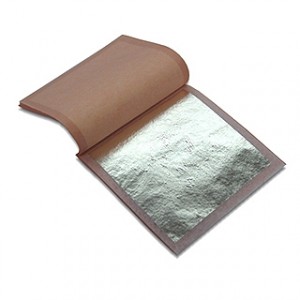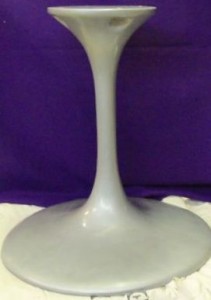Gilding is one of our specialties as painting and decorating contractors in the Chicago area. It consists in the laying of super thin, square leaves of metal over a tacky varnish. Precious metals and composition metals can be successfully used for the gilding of surfaces.
To this day, our most interesting gilding project had been the decoration of an ornate sarcophagus intended to be used by an Italian club, as part of an annual festival to celebrate a beloved Saint from their native town in Sicily. White gold (12 karat gold) was used for that project.
We were recently hired for a gilding project that rivals our sarcophagus project in scope. This project consists in the gilding of an architectural, curved ceiling, in a high-style powder room, using palladium leaf. Palladium is in the family of platinum, one of the precious metals. It is the least dense of the platinum elements and is therefore best suited for leafing purposes. It also rivals the cost of gold in dearness.
Palladium has a soft silver color. However, contrary to silver or white gold (which is a combination of gold and silver), palladium does not tarnish and therefore doe not need to be sealed-coated. Only pure gold leaf can make that claim. As a result, palladium has a beautifully soft metallic look.
The attached picture shows the final look of the palladium ceiling. Our client wanted the look of silver, with its soft reflectivity for the different light sources in the room. She was thrilled!









 Follow
Follow





